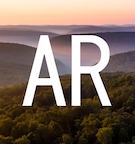Geographical Index > United States > Iowa > Decatur County > Report # 24056
(Class B)
Submitted by witness on Tuesday, June 24, 2008.
Hunter describes combination of rock clacking and bird-like vocals in public hunting area near Van Wert
(Show Printer-friendly Version)
YEAR: 2008
SEASON: Spring MONTH: May DATE: 28 STATE: Iowa COUNTY: Decatur County LOCATION DETAILS: THE WEST END OF DEKALB PUBLIC HUNTING AREA. AROUND THE ABANDONED QUERRY PIT. NEAREST TOWN: VAN WERT NEAREST ROAD: J22 OBSERVED: JUNE 28TH, 2006. I HAVE EARLIER REPORTED A BIGFOOT SIGHTING SEVERAL YRS AGO. THIS HAPPENED TO BE IN IOWA, DECATUR CO. AND SO HAS THIS OCCURENCE.
IF YOU HAVE EVER BEEN AT LEAST A PART TIME SPORTSMAN AND FOUND YOURSELF LOVING THE NATURE AROUND YOU, THEN YOU MAY KNOW WHAT I AM SPEAKING OF. THERE ARE CERTAIN SOUNDS THAT GOES ALONG WITH ANY GIVEN AREA, SOUNDS THAT BIRDS AND OTHER FAMILIAR CREATURES MAKE.
EVEN THE NUTHATCH AND THE POPPING MOREL MUSHROOM MAKE A SOUND IF YOU ARE IN THEIR WORLD LONG ENOUGH TO HEAR THEM IN REPETITION. EVEN THE TREES AND THE GROUND HAVE MADE NOISES THAT MOST SPORTSMEN SIMILARLY IGNORE.
IT WASN'T UNTIL TODAY, 6/24/08, THAT I PUT IT TOGETHER. A SOUND WAS RECOGNIZED BY MYSELF WHICH I BELIEVE TO BE A BIGFOOT. I WILL EXPLAIN AS BEST I CAN.
I RETURNED TO THE PARSAL OF LAND WHICH I HAD MY 1ST VISUAL EXPERIENCE OF THE CREATURE. HE SORTA SCARED ME OFF. I BROUGHT A FRIEND WITH ME TO SHOOT SOME GUNS AS IT IS A VERY SAFE PLACE TO DO SO. WE HADN'T PUT TOO MANY ROUNDS DOWN RANGE INTO A STEEP VERTICLE BANK WHICH IS PROBABLY 50 FT HIGH. WE WERE LESS THAN 200 YDS FROM THE SIGHTING LOCATION AND I COULD HEAR TWO HUGE ROCKS BEING SMACKED TOGETHER. IT WAS NO COINCIDENCE. I HAVE HEARD THIS BEFORE WHILE IN THE WOODS, BUT ONLY AT 2 LOCATIONS. IT WAS QUITE RHYTHMIC AND THE NUMBER OF SMACKS WERE LIKE ALWAYS EQUALING 4-6 IN THE COUNT. I EVEN MENTIONED TO THE MAN WHO WAS WITH ME, BUT THE NOISE HAD STOPPED BY THE TIME HE HEARD ME OVER HIS EAR PROTECTION.
I ALSO HAD EAR PLUGS IN, BUT HAD NO PROBLEM HEARING THE SOUNDS. I KIND OF THINK THIS ROCK SMACKING IS TO LET ALL OTHERS OF THEIR KIND KNOW ABOUT HUMANS ARE AROUND. I'M ALSO THINKING THAT IT IS TO GIVE AN " ALL CLEAR" MESSAGE AS IT IS HAPPENING AT A SPECIFIC TIME, EACH TIME.
I ALSO THINK THEY USE THE CALLS OF NATURE'S WILDLIFE TO COMMUNICATE. PARTICULARLY THAT OF A GREAT HORNED OWL AND A CROW. THIS IS DUE TO THE FREQUENCY AND TIMES OF OCCURRENCE WHICH I CAN'T QUITE EXPLAIN. IT IS SOMETHING YOU HAVE TO EXPERIENCE FOR YOURSELF. OTHER WITNESSES: NONE TIME AND CONDITIONS: 10-11 AM. IT WAS SLIGHTLY BREEZY, MOSTLY SUNNY AND QUITE WARM. THE SUN WAS BRIGHT AND THERE WAS NO HAZE IN THE BOTTOM LIKE THERE USUALLY CAN BE. IT HAS BEEN A VERY WET SPRING AND VERY HUMID THAT DAY. ENVIRONMENT: HEAVY TIMBER AND BRUSH SURROUND THE PIT. ALL TOGETHER THERE IS APPROX 2000 ACRES IN THIS SITE AND MORE WOODS SURROUNDING THAT. THERE IS AN ABONDONED QUERRY PIT IN THIS LOCATION AND A NATUARL FLOWING SPRING ABOUE IF. THA SPRING IS VERY ACTIVE. THERE IS A LARGE RIVER BEAD RUNNING BESIDE THE PIT.
Follow-up investigation report by BFRO Investigator Steve Moon:
[Investigated by Steve Moon. Comments edited by Matt Moneymaker]
In 2008 the witness heard what he thinks were two individuals clacking rocks together, signaling each other. The witness stated that he had previously heard the sounds of rocks being smacked together in the quarry area more than once. The sound is of big rocks being banged together, like the sound of a horse on concrete. In that same area he has found really big rocks that have been lifted and turned over.
He believes the same animals have used bird-like sounds to signal each other, including the vocal sounds of owls (in the daytime), woodpeckers and hen turkey.
One night as a storm was approaching he crossed the creek and walked about a half mile and heard a hoot owl, then two, and then five to eight howls. One howl was to the south of him, and the others were all to the north, spread in an east to west line, with one very close to him.
In 1978 or 1979 when witness was 17 or 18 years old, he was squirrel hunting with friends. He lost track of them, and went back to the truck and found them there. He asked if someone was in the creek. He had heard banging or rocks like a hammer, for about an hour at the creek, and then heard a stone being thrown and then rolling.
The witness has been hunting in the area for about 30 years and seems very in tune with its natural features and the animals found there. After speaking with the witness about this incident I concluded that he is a credible observer.
The Dekalb Wildlife Management Area is 2,1070 acres, about three quarters of which is timber. There are two streams that bisect the area, numerous inactive rock quarries, and at least one large spring.
----------------------------------------------------
Editor's note: This witness made some astute observations. What he describes, with respect to rock clacking, has been observed (heard) on various other expeditions and field investigations, spanning several years, in different parts of the country with a history of sightings. His assumptions about their purpose, based on their context and circumstances, equate with our own assumptions about their purpose, based on similar contexts and circumstances -- they seem to be made for purpose of signaling other sasquatches that more than one human is not far away.
Iowa might not seem like a classic bigfoot area, according to the old thinking about these animals, but the BFRO has accumulated a lot of first-hand observations suggesting that these animals seem to be reported areas with large ungulate populations. In parts of the western states and western provinces, the most reliable indicator species is elk. In the mid-west and eastern states and provinces the indicator species seems to be whitetail deer.
This correlation with ungulate populations was first noted by the BFRO, and continues to serve an important function in selecting expedition locations.
Iowa and various other mid-western states have abundant whitetail deer populations, mainly due to the amount of agriculture in those states, and the amount of acorn-bearing oak hardwood trees.
About BFRO Investigator Steve Moon:
A native of southeast Iowa, Steve has long been a cave explorer and outdoor adventurer. He became involved in bigfoot research in 2008. Steve organized BFRO IOWA Public Expeditions in 2011, 2012, 2013, 2014 and 2016, and is currently organizing a 2017 IOWA expedition. Steve is an artist, photographer, farmer, anthropologist and professional researcher. His primary research areas are the river basins of the Mississippi River and its tributaries, and all of eastern Iowa.
|























